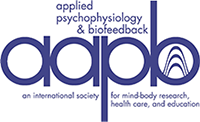SPECIAL ISSUE: Pain—There Is Hope
Many factors influence pain perception, including physical/physiological, behavioral, and psychological/emotional factors. This is illustrated by the description of a four-year-old child receiving a painless vaccination that highlighted the gap between theoretical knowledge of pain management and its practical application. Five key elements for reducing pain perception are explored: exhaling during the painful stimulus, creating a sense of safety, using distraction, reducing anticipation of pain, and understanding the personal meaning of pain. The discussion includes how exhalation activates the parasympathetic nervous system, thereby reducing pain perception, as illustrated by research on a yogi who inserted skewers through his tongue without bleeding or reporting pain. Feeling safe is another component that may reduce pain perception and enhance healing, as demonstrated by research on Sufis who heal rapidly after deliberately inflicting harm, such as pushing a knife through the pectoralis muscle. In addition, the article examines the physiological mechanisms of pain modulation, including the role of baroreceptors and their influence on inflammation and pain signaling. In summary, the article emphasizes the importance of hope, trust, and acceptance, suggesting that mindful breathing, self-healing visualizations, and engagement in meaningful activities may reduce pain and promote healing.

Changes in heart rate as modulated by slower breathing at about six breaths per minute.

The covert surface electromyography (sEMG) increase in forearm sEMG as the participant imagined playing the piano (reproduced by permission from Peper et al., 2015).

Demonstration of Japanese Yogi Master Mitsumasa Kawakami voluntary piercing the tongue and neck with unsterilized skewers while experiencing no pain, bleeding, or infection (reproduced by permission from Peper et al., 2006).

Voluntary piercing and with unsterilized skewers by Sufi initiates and subsequent tissue healing after 14 hours.



Contributor Notes
